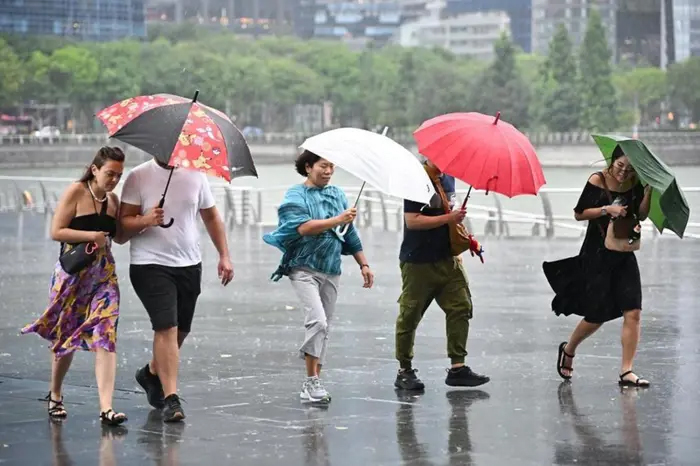ENVIRONMENT
The weatherman in early February declared the onset of La Nina, a climate phenomenon that often brings rain and cooler weather to the Republic.
But the cooling effect will not be as pronounced due to the longer-term warming trend, the Meteorological Service Singapore (MSS) told The Straits Times.
Due to global warming, recent March to May temperatures – which are among the warmest months in Singapore – associated with La Nina are still higher than those associated with the warming El Nino phenomenon 40 years ago, added MSS.
El Nino typically brings drier, hotter conditions to South-east Asia and Australia, while La Nina usually brings wetter and cooler conditions.
They alternate every few years and, together, the two phases are known as the El Nino-Southern Oscillation (Enso).
Enso is a global natural climate cycle involving changes in winds and sea surface temperatures over the tropical Pacific Ocean, the largest ocean basin in the world.
During a La Nina event, winds that blow from east to west across the tropical Pacific Ocean gets stronger. These winds are called trade winds.
More shallow warm water pools up in the western Pacific Ocean which includes South-east Asia.
This typically results in more rain over Singapore as the winds bring moisture and rainfall to the area.
La Nina conditions are considered established based on several indicators like sea surface temperatures, trade winds and cloudiness over the tropical Pacific region, said MSS, which is under the National Environment Agency.
This episode is predicted to last till April or May, after which neutral conditions are expected to set in when neither phenomenon is happening.
During and just after La Nina, the highest and average daily temperatures tend to be lowered, but high temperatures can still occur, said MSS.
For example, in the last La Nina event that extended into the start of 2023, the mercury peaked to 37 deg C on May 13, a level not seen since 1983.
Dr Koh Tieh Yong, from the World Climate Research Programme, said the current La Nina episode is weak, which means other regional weather influences may easily overpower the impact of the phenomenon.
“The local weather may manifest within the normal range of variability – wetter or drier, cooler or warmer – as though the La Nina did not happen,” added Dr Koh, who co-chairs the Asian-Australian Monsoon working group under the programme.
La Nina is a climate phenomenon, but there are other drivers of weather in Singapore.
Singapore is currently in the dry phase of the North-east monsoon, which typically ends around early March.
From late March to May, the inter-monsoon period sets in, when afternoon thunderstorms can be common.
MSS noted that on average, during the end of the North-east Monsoon and the inter-monsoon period, Singapore experiences slightly higher rainfall during La Nina events compared with El Nino events.
However, this differs from year to year.
Some of the wettest February to March periods have occurred during times when neither climate phenomena were occurring, added MSS.
Globally, the current La Nina conditions were only fully established in December 2024, which is a relatively late start.
MSS explained that this is likely because the trade winds were unfavourable and slowed the cooling of the shallow top layer of water in the eastern Pacific, near South America.
“Thus, the manifested La Nina is presently expected to be short-lived if no random weather event occurs by April or May (to strengthen it),” added Dr Koh.
The previous La Nina episode between 2020 and early 2023 was particularly prolonged. In 2022, Singapore saw the wettest October in more than 40 years, clocking 412mm of rainfall.
Even so, the annual temperature in 2022 was the 10th highest since temperature records began in 1929.
After the inter-monsoon season ends around May, a second monsoon season – the South-west monsoon – occurs from June to September.
During this period, winds typically approach from the south-east, and blow towards the north-east.
The south-west monsoon is generally a drier season for the region compared to other times of the year.
But there is still a chance of a wetter than average south-west monsoon season this year, as Singapore’s rainfall is affected by other large-scale climate drivers, as well as day-to-day variations in the weather, noted MSS.
“There is also a small possibility that La Nina conditions could persist or redevelop in the second half of 2025,” added the national meteorological service.
SINGAPORE: TST/ANN/TS

